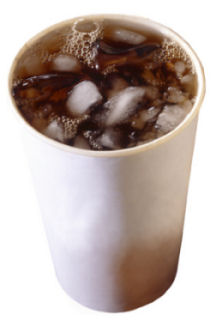Cola May Weaken Women’s Bones
Middle age and older women may want to limit their consumption of cola-flavored soft drinks. A new study links regular consumption of these beverages with reduced mineral density of hip bones in women past menopause. No similar hip vulnerability to cola showed up in men of the same age.

The gender-specific finding was quite strong, notes Katherine L. Tucker of the Jean Mayer USDA Human Nutrition Research Center on Aging in Boston. Her team looked at study participants’ consumption of other soft drinks, other sources of caffeine, and calcium. The research also factored in an individual’s size and a host of additional variables that might have affected bone density. However, Tucker told Science News Online, no matter how her team looked at the data, the trend remained: the more cola a woman consumed, the lower the average mineral density in her hip.
Tucker’s work was part of the long-running Framingham (Mass.) Osteoporosis Study, begun in 1971. Participants receive physical exams every 4 years. At the same time, they complete extensive dietary questionnaires.
The researchers had bone-density readings measured at the spine and three sites in the hip for 1,413 women and 1,125 men—all in their 50s and 60s. They correlated the bone data with each individual’s diet patterns and various lifestyle factors, including smoking, physical exercise, coffee consumption, and alcohol intake.
Earlier studies in girls had suggested that drinking colas might lower bone density. Data from men and women had been less clear—the studies tended to be small or statistically weak. Because caffeine has emerged as a risk factor for reduced bone density and because soft drink consumption has been climbing nationally, Tucker’s group decided to sort out the risk between carbonated drinks generally and caffeine-containing colas in particular.
Tucker’s group reports in the Oct. 1 American Journal of Clinical Nutrition that only consumption of cola carried a risk of low bone density. Compared with women who consumed only noncola beverages, those who drank cola more than occasionally had “significantly lower” bone density in their hips, though not in their spines. For instance, drinking one daily serving of cola lowered a woman’s bone density about 4 to 5 percent. Whether a woman drank sweetened or diet cola made no difference.
Tucker remarks that even decaf colas showed this trend, suggesting that if caffeine consumption lowers a woman’s bone density, it’s far from the only explanation for such an effect from cola.
“Given the size of our study, the strength of the association, its consistency . . . this is a pretty robust association” between cola consumption and reduced bone density, Tucker concludes. Indeed, she and her colleagues note, the fact that the effect from cola overshadowed calcium’s influence on bone density indicates that the problem with drinking colas isn’t that they displace milk or other healthful beverages from the diet.
Tucker’s group says that cola’s health impact could be important. “From 1960 to 1990, carbonated beverage consumption increased more than three-fold,” say the researchers. “In our sample, more than 70 percent of carbonated beverages consumed were colas, all containing phosphoric acid (H3PO4) and [at least half] containing caffeine.”
Other carbonated soft drinks rarely contain phosphoric acid. Determining whether the acid or some other cola ingredient might be responsible for cola’s apparent effects on bone will require further investigation, they say. It’s possible, Tucker says, that low, regular consumption of phosphoric acid, which reacts with calcium in a way that neutralizes the acid, might slowly leach calcium from bone.
If true, this might explain the gender effect, Tucker says, since men generally have more bone than women to start and so have more calcium to spare. A finding that phosphoric acid is removing bone calcium might also suggest a way women could keep drinking cola but spare their bones: Take antacid tablets when the beverage is consumed alone—or, better yet, drink any cola as part of a meal rich in acid-buffering minerals, such as calcium, potassium, and magnesium.
Foods that serve as good calcium sources include yogurt, cheese, tofu, broccoli, Chinese cabbage, kale, and calcium-fortified juices. For potassium, look to fruits and vegetables, especially leafy greens, vine fruits—such as tomatoes, cucumbers, and eggplant—and root vegetables. Rich sources of magnesium include green leafy vegetables, whole grains, nuts, and meats.
Indeed, a 1999 study by Tucker’s team showed that diets rich in potassium, magnesium, fruits, and vegetables tend to be protective of hip bone density in both men and women.
If you would like to comment on this article, go the Food for Thought blog.







